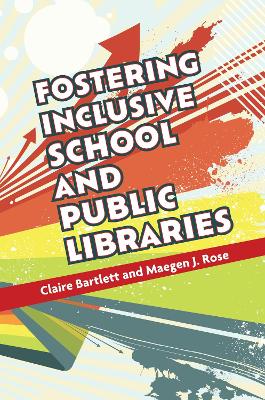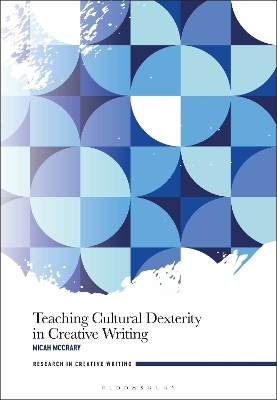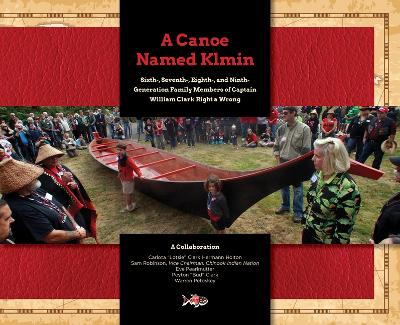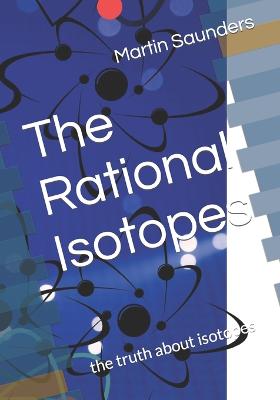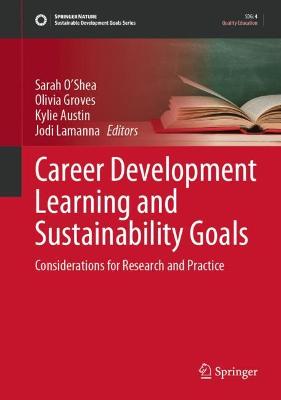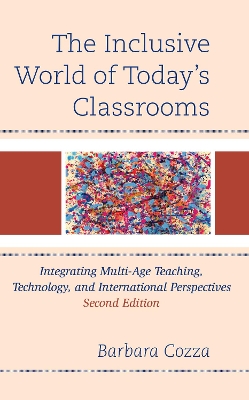School Libraries Supporting Students with Hidden Needs and Talents
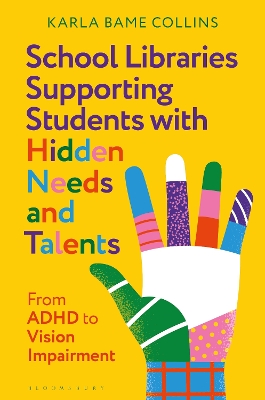 portes grátis
portes grátis
School Libraries Supporting Students with Hidden Needs and Talents
From ADHD to Vision Impairment
Collins, Karla Bame
Bloomsbury Publishing Plc
11/2024
208
Dura
9798216190110
15 a 20 dias
Descrição não disponível.
Introduction
1 Collaboration and Interprofessional Practice
What Is Collaboration?
Levels of Collaboration
Interprofessional Teams
Bibliography
2 Addressing Learners' Hidden Needs and Talents through Universal Design for Learning
Hidden Needs and Talents
Universal Design for Learning
Bibliography
3 Collaborative Lesson Planning for the School Librarian
Lesson Design
Putting It into Practice
Bibliography
4 Designing your Library Space and Program for All
Physical Library Space
Virtual Library Space
Bibliography
5 School Specialists as Collaborative Partners
Introduction
Breaking Barriers
Who Are the "Specialists" in a School?
Specialists Who Work with Specific Students
English as a Second Language (ESL) Teacher/Teacher of English Language Learners (ELL)
Gifted Resource Teacher
Reading Specialist
Special Education Teacher
Speech Language Pathologist
School Counselor
Specialists Who Focus on a Topic/Subject
Career and Technical Educator
Curriculum Specialist
Fine Arts
Health and Physical Education (HPE)
Other Essential School Community Members
Acknowledgments and Thanks
Bibliography
Professional Associations
6 Hidden Needs and Talents--A Guidebook
Models of Disability
Hidden Needs and Talents
Neurodiversity and Neurodivergent
Autism Spectrum Disorder
Attention Deficit Hyperactivity Disorder (ADHD)
Dyslexia
Sensory Processing and Integration
Color Vision Deficiency
Giftedness
Food Sensitivities--Allergy and Intolerance
Mental Health Concerns
Trauma
Poverty/Housing and/or Food Insecure
Are These "Hidden" Needs and Talents?
Deaf and Hard of Hearing
Vision Impairment and Blindness
Chronic (or Long-term) Physical Illness or Condition
Asthma
Autoimmune Disease
Cancer
Diabetes (Type 1 and Type 2)
Epilepsy/Seizure disorder
Lyme Disease
Migraine/Chronic Headaches
Pediatric Acute-Onset Neuropsychiatric Syndrome (PANS) and Pediatric Autoimmune Neuropsychiatric Disorder Associated with Streptococcal Infections (PANDAS)
Polycystic Ovarian Syndrome
Bibliography
7 Final Thoughts
Bonus Library Lessons
Finding the Story Around Us
Wrap It Up
Bibliography
Index
1 Collaboration and Interprofessional Practice
What Is Collaboration?
Levels of Collaboration
Interprofessional Teams
Bibliography
2 Addressing Learners' Hidden Needs and Talents through Universal Design for Learning
Hidden Needs and Talents
Universal Design for Learning
Bibliography
3 Collaborative Lesson Planning for the School Librarian
Lesson Design
Putting It into Practice
Bibliography
4 Designing your Library Space and Program for All
Physical Library Space
Virtual Library Space
Bibliography
5 School Specialists as Collaborative Partners
Introduction
Breaking Barriers
Who Are the "Specialists" in a School?
Specialists Who Work with Specific Students
English as a Second Language (ESL) Teacher/Teacher of English Language Learners (ELL)
Gifted Resource Teacher
Reading Specialist
Special Education Teacher
Speech Language Pathologist
School Counselor
Specialists Who Focus on a Topic/Subject
Career and Technical Educator
Curriculum Specialist
Fine Arts
Health and Physical Education (HPE)
Other Essential School Community Members
Acknowledgments and Thanks
Bibliography
Professional Associations
6 Hidden Needs and Talents--A Guidebook
Models of Disability
Hidden Needs and Talents
Neurodiversity and Neurodivergent
Autism Spectrum Disorder
Attention Deficit Hyperactivity Disorder (ADHD)
Dyslexia
Sensory Processing and Integration
Color Vision Deficiency
Giftedness
Food Sensitivities--Allergy and Intolerance
Mental Health Concerns
Trauma
Poverty/Housing and/or Food Insecure
Are These "Hidden" Needs and Talents?
Deaf and Hard of Hearing
Vision Impairment and Blindness
Chronic (or Long-term) Physical Illness or Condition
Asthma
Autoimmune Disease
Cancer
Diabetes (Type 1 and Type 2)
Epilepsy/Seizure disorder
Lyme Disease
Migraine/Chronic Headaches
Pediatric Acute-Onset Neuropsychiatric Syndrome (PANS) and Pediatric Autoimmune Neuropsychiatric Disorder Associated with Streptococcal Infections (PANDAS)
Polycystic Ovarian Syndrome
Bibliography
7 Final Thoughts
Bonus Library Lessons
Finding the Story Around Us
Wrap It Up
Bibliography
Index
Este título pertence ao(s) assunto(s) indicados(s). Para ver outros títulos clique no assunto desejado.
Universal Design for Learning; Speech/Language Specialist; Specialists; Social Worker; School Resource Officer; School Psychologist; School Libraries; School Counselor; Professional Development; Physical/Occupational Therapist; Culture of Collaboration; Hidden Needs and Talents; hidden disabilities; backward design; co-planning; co-teaching; co-assessing; learning theories; SMART objectives; schoolwide culture; learning environment; interprofessional teams; assistive technology; advocacy
Introduction
1 Collaboration and Interprofessional Practice
What Is Collaboration?
Levels of Collaboration
Interprofessional Teams
Bibliography
2 Addressing Learners' Hidden Needs and Talents through Universal Design for Learning
Hidden Needs and Talents
Universal Design for Learning
Bibliography
3 Collaborative Lesson Planning for the School Librarian
Lesson Design
Putting It into Practice
Bibliography
4 Designing your Library Space and Program for All
Physical Library Space
Virtual Library Space
Bibliography
5 School Specialists as Collaborative Partners
Introduction
Breaking Barriers
Who Are the "Specialists" in a School?
Specialists Who Work with Specific Students
English as a Second Language (ESL) Teacher/Teacher of English Language Learners (ELL)
Gifted Resource Teacher
Reading Specialist
Special Education Teacher
Speech Language Pathologist
School Counselor
Specialists Who Focus on a Topic/Subject
Career and Technical Educator
Curriculum Specialist
Fine Arts
Health and Physical Education (HPE)
Other Essential School Community Members
Acknowledgments and Thanks
Bibliography
Professional Associations
6 Hidden Needs and Talents--A Guidebook
Models of Disability
Hidden Needs and Talents
Neurodiversity and Neurodivergent
Autism Spectrum Disorder
Attention Deficit Hyperactivity Disorder (ADHD)
Dyslexia
Sensory Processing and Integration
Color Vision Deficiency
Giftedness
Food Sensitivities--Allergy and Intolerance
Mental Health Concerns
Trauma
Poverty/Housing and/or Food Insecure
Are These "Hidden" Needs and Talents?
Deaf and Hard of Hearing
Vision Impairment and Blindness
Chronic (or Long-term) Physical Illness or Condition
Asthma
Autoimmune Disease
Cancer
Diabetes (Type 1 and Type 2)
Epilepsy/Seizure disorder
Lyme Disease
Migraine/Chronic Headaches
Pediatric Acute-Onset Neuropsychiatric Syndrome (PANS) and Pediatric Autoimmune Neuropsychiatric Disorder Associated with Streptococcal Infections (PANDAS)
Polycystic Ovarian Syndrome
Bibliography
7 Final Thoughts
Bonus Library Lessons
Finding the Story Around Us
Wrap It Up
Bibliography
Index
1 Collaboration and Interprofessional Practice
What Is Collaboration?
Levels of Collaboration
Interprofessional Teams
Bibliography
2 Addressing Learners' Hidden Needs and Talents through Universal Design for Learning
Hidden Needs and Talents
Universal Design for Learning
Bibliography
3 Collaborative Lesson Planning for the School Librarian
Lesson Design
Putting It into Practice
Bibliography
4 Designing your Library Space and Program for All
Physical Library Space
Virtual Library Space
Bibliography
5 School Specialists as Collaborative Partners
Introduction
Breaking Barriers
Who Are the "Specialists" in a School?
Specialists Who Work with Specific Students
English as a Second Language (ESL) Teacher/Teacher of English Language Learners (ELL)
Gifted Resource Teacher
Reading Specialist
Special Education Teacher
Speech Language Pathologist
School Counselor
Specialists Who Focus on a Topic/Subject
Career and Technical Educator
Curriculum Specialist
Fine Arts
Health and Physical Education (HPE)
Other Essential School Community Members
Acknowledgments and Thanks
Bibliography
Professional Associations
6 Hidden Needs and Talents--A Guidebook
Models of Disability
Hidden Needs and Talents
Neurodiversity and Neurodivergent
Autism Spectrum Disorder
Attention Deficit Hyperactivity Disorder (ADHD)
Dyslexia
Sensory Processing and Integration
Color Vision Deficiency
Giftedness
Food Sensitivities--Allergy and Intolerance
Mental Health Concerns
Trauma
Poverty/Housing and/or Food Insecure
Are These "Hidden" Needs and Talents?
Deaf and Hard of Hearing
Vision Impairment and Blindness
Chronic (or Long-term) Physical Illness or Condition
Asthma
Autoimmune Disease
Cancer
Diabetes (Type 1 and Type 2)
Epilepsy/Seizure disorder
Lyme Disease
Migraine/Chronic Headaches
Pediatric Acute-Onset Neuropsychiatric Syndrome (PANS) and Pediatric Autoimmune Neuropsychiatric Disorder Associated with Streptococcal Infections (PANDAS)
Polycystic Ovarian Syndrome
Bibliography
7 Final Thoughts
Bonus Library Lessons
Finding the Story Around Us
Wrap It Up
Bibliography
Index
Este título pertence ao(s) assunto(s) indicados(s). Para ver outros títulos clique no assunto desejado.
Universal Design for Learning; Speech/Language Specialist; Specialists; Social Worker; School Resource Officer; School Psychologist; School Libraries; School Counselor; Professional Development; Physical/Occupational Therapist; Culture of Collaboration; Hidden Needs and Talents; hidden disabilities; backward design; co-planning; co-teaching; co-assessing; learning theories; SMART objectives; schoolwide culture; learning environment; interprofessional teams; assistive technology; advocacy

